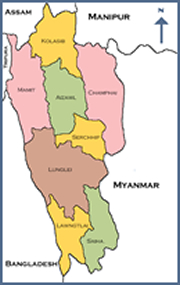Mahatma Gandhi thought he would live up to be 125. Alas, that was not to be. But the Indian National Congress to which he devoted the last thirty years of his life has reached that landmark number. Whatever is good and bad about India can be laid at the door of the Congress.

Winston Churchill once boasted that history would be kind to him. He added, 'That is because I intend to write it.' The Congress has fashioned much of modern India's history. But it has also written India's history in such a way that no one gets any credit for any of the big successes India has witnessed. It would have us believe that single-handedly it delivered India's independence and no other group made any contribution. It then delivered the Constitution and made India into a vibrant democracy. Then of course it established a secular polity and gave India stability against its enemies, both internal and external. Then almost as an afterthought it gave us liberal economic reform which has now made India a great economic power.
This is, of course, a gross distortion of the truth. The Congress did do a lot of good no doubt but many others helped as well. Before Independence, there were many idealistic patriotic men and women who rejected Congress's moderate non-violent strategy and took up arms. They may have failed but they did make an impact. So did the Constitutional wing which collaborated with the British. After all, the Constitution derives largely from the Government of India Act 1935. The Congress played no part in its construction since it did not go to the first Round Table Conference and then rejected the Act after its publication. It was under this Act that the Constituent Assembly was elected and gave the Congress the chance to fashion the rest of India's Constitution after 1946.

The one major contribution of the Congress has to be India's democratic polity. Without Jawaharlal Nehru's democratic behaviour, India would not have retained its democracy after Independence. Neither the RSS nor the Communists championed democracy. But after his death, and especially after 1969 when the Congress split, the democratic culture was abandoned within the Congress. Soon all Indian parties abandoned any democratic practice internally. To this day, leaders of parties are not elected but enthroned. How long can democracy last in a polity where the leaders do not subject themselves to any democratic challenge?
But perhaps the most galling aspect of the Congress record is its failure to tackle poverty. Having been in power for fifty out of the sixty-three years, the Congress makes no apology for the appalling record of poverty it has presided over. For the first forty- two years after independence except for two years of the Janata, Congress had total command over the economy. It failed to generate economic growth, or employment or eradicate poverty or pursue land reforms, or educate the masses of India or look after their health. All this was called Socialist Pattern of Society. In the meantime, neighbours of India like Malaysia and Sri Lanka, to say nothing of Asian tigers like Taiwan, South Korea surged ahead of India. India, which was the best endowed and most industrialised country in Asia in 1947 (Japan did better before the War but by 1947 it had its economy bombed out) fell behind steadily. It neglected its industrial base in textiles and consumer industries and went on to build monuments of folly since the Soviet Union was our model. Generations of Indians paid the cost for the grandiose structures of machine building.

India's real progress dates from the period when Congress monopoly of political power ended. That is when the backward castes at last got their voice heard in politics. Mandalisation is wasteful but it is the only way the downtrodden could get anywhere within the Hindu social order, which the Congress had failed to reform.
The real economic breakthrough came in 1991.Three things helped. The Congress did not have a commanding majority. The Prime Minister did not belong to the Nehru-Gandhi family and the Finance Minister was a non-Congress technocrat.
The winning formula then is Congress in power but without a majority and the Prime Minister from outside the family and preferably not a Congress veteran.
Source: Indian Express





 Mizoram is one of the Seven Sister States in North Eastern India, sharing borders with the states of Tripura, Assam, Manipur and with the neighboring countries of Bangladesh and Myanmar. It became the 23rd state of India on 20 February 1987 with Aizawl as its capital-after years of insurgency. The state has been under dry law for 13 years, as the Mizoram Liquor Total Prohibition Act was enforced in the state two years after formulation, on February 20, 1997. Wine processing from grapes was allowed in the state after the act was amended in April 2007.
Mizoram is one of the Seven Sister States in North Eastern India, sharing borders with the states of Tripura, Assam, Manipur and with the neighboring countries of Bangladesh and Myanmar. It became the 23rd state of India on 20 February 1987 with Aizawl as its capital-after years of insurgency. The state has been under dry law for 13 years, as the Mizoram Liquor Total Prohibition Act was enforced in the state two years after formulation, on February 20, 1997. Wine processing from grapes was allowed in the state after the act was amended in April 2007. states, though the sales persons may be above the age of 21 as each state is free to have its own laws and policies for marketing wine and alcoholic products.
states, though the sales persons may be above the age of 21 as each state is free to have its own laws and policies for marketing wine and alcoholic products.




























 Kendriya Vidyalayas to offer skill development
Kendriya Vidyalayas to offer skill development




